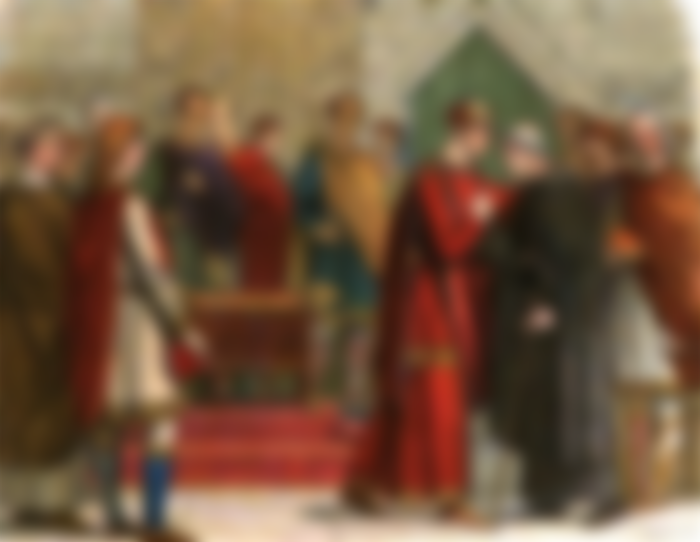On October 14, 1066, the Battle of Hastings took place in which the last Anglo-Saxon king of England, Harold II, died. The winner of the battle was the Norman Duke William the Illegal, who then went down in history as William the Conqueror. and was crowned as William I, King of England.

It was a time of significant social, cultural and political change for England. The former Anglo-Saxon nobility was replaced by the Normans, the Church was reformed and the administration of state institutions was strengthened. With the Normans, the feudal order arrived in England, and Latin and French became the languages of administration and significantly transformed the English language.

English King Edward the Confessor on his deathbed chose his brother-in-law Harold as his successor, although the Crown promised several times to William of Normandy, a descendant of the warlike Vikings and ruler of northern France, with whom he was related. At this news, William was furious and promised to return by force.
Cunningly, with the help of the pope, he interpreted his conquest as a just crusade in the fight for the vacated English throne. The then England was also adopted by the Norwegians, so the newly elected English King Harold found himself in a hopeless situation. After landing on the shores of England in late September and capturing undefended cities without a fight,

On October 14, 1066, William began a decisive battle at Hastings. With 5,000 heavily armored cavalry, he attacked Harold. It was a new warfare technique for the islanders. In a bloody battle, Norman cavalry overran English infantry, and King Harold himself lost his head. William then proved to be a good politician: he waited for the humiliated Anglo-Saxons to offer him the crown themselves, thus confirming him as the rightful ruler.

Prominent ladies from Bayeux have woven a famous tapestry about this turbulent feudal episode, which - as in a comic book - shows all the details of the last successful invasion of England. The Bayeux tapestry, the most famous such work of art in human history, is an embroidered canvas about 70 feet long. 72 war scenes are painted on it, more than 1500 figures of people, mythical creatures, animals, trees and war equipment are drawn in eight colors.

The conquest of the English crown by the Norman Duke Willim is described in about 2,000 Latin words, and experts cite the Bayeux tapestry as the first comic in history. After the victory at Hastings, a small number of Normans seized Anglo-Saxon cities, fortresses and estates, and William, now nicknamed the "Conqueror", introduced a rigid feudal system modeled on the continental, French. In doing so, he used the services of the local nobility without changing the old laws. Over the course of three centuries, a handful of Norman conquerors completely drowned in the newly created, self-sufficient English nation.

To maintain order in the country, William began building numerous fortifications, including the infamous Tower of London, built to provide control in London. The fact that in 1070 he was crowned by the papal delegate Ermenfrid of Sitten also contributed to this. By 1072, William the Conqueror had secured full power in England and the situation became stable.
One of the biggest changes that affected England after all high duties, both secular and ecclesiastical, have come to Norman's hands. At the beginning of his reign, William promised to respect laws of Edward the Confessor and enabled the English nobles, who obeyed him, to retain their lands and positions. However, after to the Norman nobles. This resulted in a complete replacement of the English aristocracy to the Norman one. part of the English aristocracy migrated to other European countries, especially to the Byzantine Empire and the Scandinavian countries.
The Battle of Hastings is one of the greatest turning points in the history of England. William’s victory kicked off in the following centuries. The Anglo-Saxon aristocracy was replaced by a new, Norman one that brought with it a new language and a new culture. The arrival of the Normans for England also meant changes in the Church and administration, and with the Norman occupation came feudalism to England and the whole country, both owned by the nobles and by the churches, came under the ownership of the king. The Norman conquest of England reversed the course of English history by severing England's political and cultural ties with the Scandinavian countries and strengthening ties with Latin Europe, especially France. The Anglo-Saxon royal lineage was extinguished a new era of English history began.





